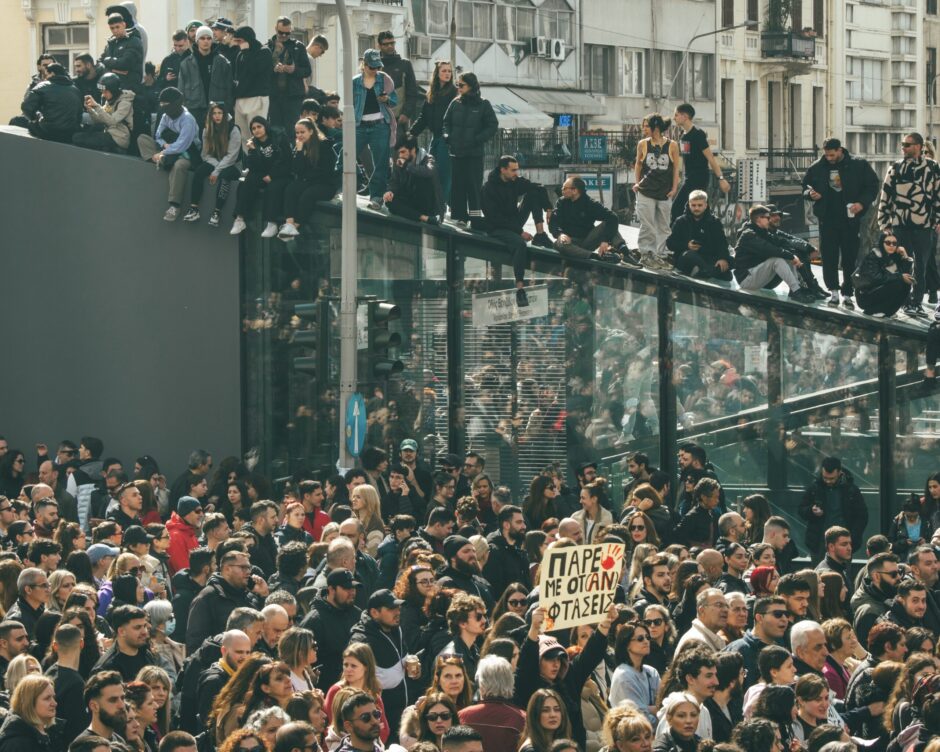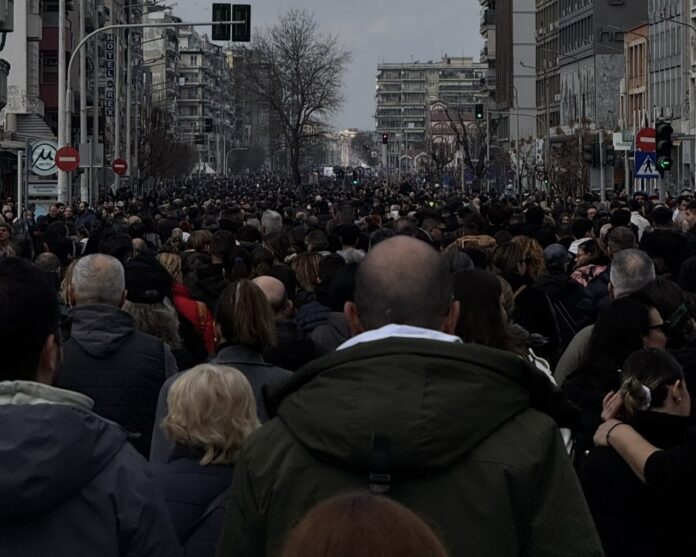Demonstration is a collective or individual public expression of protest or demand ( also for benefits) by a group of people. Its purpose is to exert pressure, raise awareness, and prevent a social or political decision. The right to “assemble” was constitutionally established in Greece in 1975 with Article 11, which defines the fundamental right of citizens to assemble peacefully and without weapons. The right to demonstrate or the right of assembly is granted to all citizens who wish to participate without suffering fear of repercussions.
Historically, in times of crisis, the Greek people united and became a large mass with a powerful voice, with young people playing a leading role. One of the most important demonstrations was in 1973, referred to as the Polytechnic uprising. This was a mass movement of resistance against the dictatorship in Greece, which began at the National Technical University of Athens by students and later spread to the wider population. However, the demand for human rights did not stop on November 17, the demonstrations and protests still continue. Over the years, Greek people have taken to the streets many times for issues that other European countries consider self-evident, which are condemned by the state and the law. Such as the cold-blooded murder of a minor by a special police guard (Alexis Grigoropoulos, Athens, December 6, 2008), in anti-memorandum demonstrations, rallies, and strikes, with crowds of people turning their hunger into strength to make their voices heard and highlight their needs and problems (Greek economic crisis 2010-2012). Mobilizations for issues related to the protection of Greek history and Greek identity, with a strong national character, through which traditional demonstrations were combined with digital mobilization, with thousands of users calling Greeks to the streets through social media platforms (Macedonian issue 2018/2019).
Tragedies in this small country seem endless, with the Tempi train disaster standing out as the cause of massive marches, demonstrations, and strikes against the so-called “murderous” state, as named by the majority of the Greek people. They demanded justice, truth, and accountability for the lives lost in a train collision, which was long foreseen by the authorities (Tempi, 28/02/2023).
From the Polytechnic to the outrage over Tempi, the history of Greek protest is filled with moments where being in the streets carried meaning and power. Yet times change. Today, presence is not only physical but also digital. Our common space is our screen, our voice has become the post, the hashtag, the story. But how present are we when we merely share something online?

The truth is that the traditional way of protesting through assembly has been proven effective worldwide. Nevertheless, technology is developing rapidly, the media are changing, and our voices have stopped being heard solely as sound. Once, our physical presence was more
than necessary; today, perhaps the dynamics of being present have changed. The space has certainly expanded -not spatially, but digitally- and our voices can now transcend national borders.
Through platforms such as Facebook, Instagram, X, and TikTok, every citizen has the ability to be informed, to express their opinion, to call for mobilization, and to record events in real time. A single video or photograph can, within moments, reach millions of people, spark public discussion, and exert pressure on institutions.
In Greece, the power of social media became evident in cases like the murder of Zack Kostopoulos, where visual evidence and online campaigns kept the case in the spotlight and prevented it from being silenced.
And yet, can we truly replace traditional demonstrations with digital ones? In my opinion, no. A “like” or a share certainly contributes to spreading the message, but it cannot exert the same pressure as a mass march that blocks streets, dominates headlines, and forces authorities to respond. Digital activism is often the first step, since it informs and inspires, while physical mobilization is what ultimately transforms anger into tangible, collective power.
These two forms of action should not be seen as rivals but as complementary. The “hashtag” can fill our screens, while the march fills the streets. Through digital activism, a demonstration can be organized and even gain an international dimension, while the physical protest confirms that our generation is not passive, hidden behind a phone screen, but one that has the strength to stand in front of government buildings, to occupy streets and squares.
In conclusion, value lies not only in where we are present, but also in how we do it. Whether our voice is heard through a microphone or reaches screens through the internet, what matters is that we do not fall silent. Our “presence” acquires meaning when it is accompanied by action, consistency, and the determination not to let injustice go unnoticed.
We must be present always and everywhere, using every means at our disposal.


Very interesting approach! Thank you for this article!